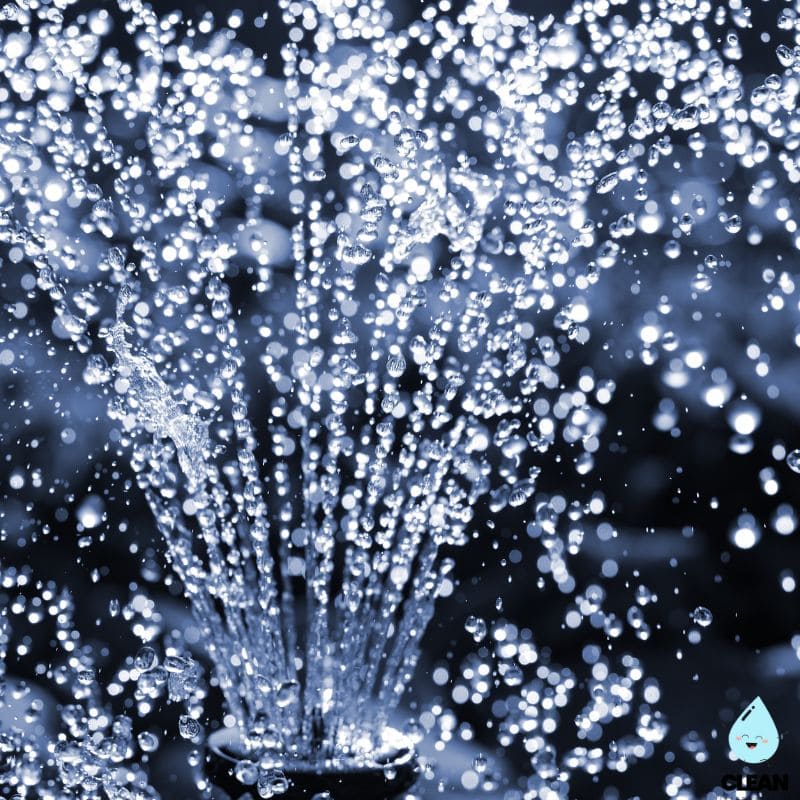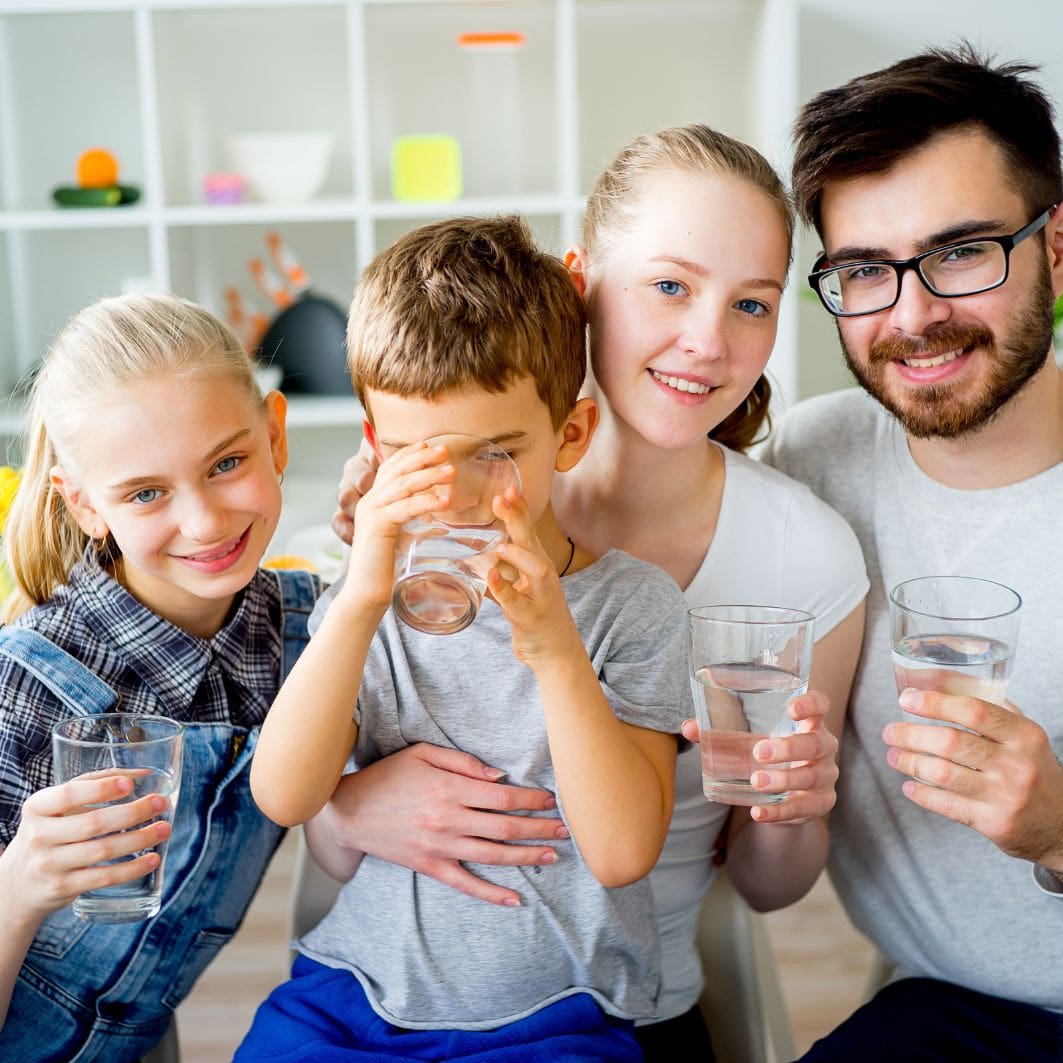Rhode Island Water Quality at a Glance
PFAS contamination
Is Rhode Island Water Safe to Drink?
Generally Safe but Concerning Trends – Rhode Island ranks 16th nationwide for water quality and meets federal standards. However, PFAS “forever chemicals” detected in 81% of tested communities, with some areas exceeding 20 ppt. The state set a 20 ppt maximum contaminant level in 2024. Major concerns include sewage overflow contaminating 60% of beaches in 2024, and legacy PFAS contamination from military sites like Naval Station Newport affecting drinking water systems.
⚠️ Key Concerns for Rhode Island Residents
- PFAS “Forever Chemicals”: 81% of tested communities show PFAS contamination; state MCL set at 20 ppt for six compounds including PFOA and PFOS
- Beach Water Quality: 60% of Rhode Island’s 66 beaches exceeded federal safety thresholds for fecal contamination at least once in 2024
- Sewage Infrastructure: 171 days of beach closures in 2024 due to elevated bacteria; aging infrastructure causes overflow during heavy rainfall
- Military Site Contamination: Naval Station Newport and other military sites contributed PFAS contamination to groundwater and drinking water systems
Read the full report below for detailed analysis, state-specific data, and actionable recommendations for Rhode Island residents.
Rhode Island – The Ocean State – Water Quality Report 2025: PFAS Testing, Infrastructure Concerns & Safety across your state
Rhode Island’s compact water infrastructure serves approximately 1.1 million residents across the nation’s smallest state, from the Providence metropolitan area to coastal communities along Narragansett Bay. The state operates through 66 public water systems, with Providence Water as the largest utility serving over 600,000 residents across more than a dozen communities. Rhode Island’s primary water sources include the Scituate Reservoir system, which provides about 60% of the state’s drinking water, along with smaller reservoirs and groundwater aquifers that supply both urban centers and coastal communities.
Despite its small size, Rhode Island faces significant water quality challenges. According to recent infrastructure assessments, the state’s drinking water infrastructure requires substantial investment to address aging systems and emerging contaminants. Rhode Island has received over $187 million in federal water infrastructure investments from the Biden-Harris Administration’s Bipartisan Infrastructure Law since 2022, including $10 million specifically to investigate and address local PFAS contamination. The state’s proactive approach to PFAS regulation is demonstrated through comprehensive legislation passed in 2022 and 2024, establishing some of the nation’s most stringent standards for “forever chemicals” in drinking water and consumer products.

Rhode Island Water Quality: Current Status (2024-2025)
Statewide Compliance and Testing
- Overall Compliance: The majority of Rhode Island’s 66 public water systems meet federal Safe Drinking Water Act standards, though PFAS contamination has been detected in 81% of tested communities, with some systems exceeding the state’s 20 ppt limit for six PFAS chemicals.
- PFAS Leadership: Rhode Island has emerged as a national leader in PFAS regulation, establishing the strictest state drinking water standards in the nation at 20 ppt for six PFAS chemicals, significantly lower than federal guidelines.
- Infrastructure Investment: Over $187 million in federal funding through the Bipartisan Infrastructure Law has been allocated to Rhode Island water infrastructure since 2022, including $10 million for PFAS research and $6.4 million for lead service line replacement.
Major Water Sources and Challenges
- Scituate Reservoir System: Provides approximately 60% of Rhode Island’s drinking water through Providence Water, serving the state’s largest population centers with comprehensive treatment and monitoring programs.
- Coastal Vulnerability: Rhode Island’s extensive coastline faces challenges from sea-level rise and saltwater intrusion into freshwater aquifers, requiring enhanced monitoring and protection measures.
- Infrastructure Modernization: Many water systems require upgrades to address aging infrastructure, with Providence Water implementing extensive capital improvement programs for pipe replacement and system reliability.
PFAS Contamination Response
- Comprehensive PFAS Regulation: Rhode Island’s drinking water standards for six PFAS chemicals at 20 ppt are among the most protective in the nation, requiring quarterly monitoring for systems exceeding limits.
- Source Identification: Major PFAS contamination sources have been identified including Naval Station Newport, fire stations throughout the state, textile mills, and Superfund sites, with targeted remediation efforts underway.
- Consumer Product Bans: Rhode Island passed comprehensive PFAS bans in 2022 and 2024, prohibiting these chemicals in food packaging, firefighting foam, cosmetics, cookware, and other consumer products to prevent future contamination.
Small and Disadvantaged Communities
- Targeted Support: The University of Rhode Island Water Quality Program is conducting a $1.5 million study focusing on PFAS contamination in two pilot communities to develop best practices for treatment and public engagement.
- Technical Assistance: Enhanced support is available through the Rhode Island Department of Health and EPA to help smaller systems navigate complex PFAS regulations and secure funding for necessary improvements.
- Lead Service Line Replacement: Providence Water received $6.4 million in federal WIIN Act grants to assist disadvantaged neighborhoods with private lead service line replacement, protecting vulnerable populations from lead exposure.
Looking Forward: 2025-2030
Rhode Island’s water quality landscape is being transformed through some of the nation’s most aggressive PFAS regulations and substantial federal infrastructure investments. The state’s comprehensive approach to addressing emerging contaminants, combined with ongoing infrastructure modernization efforts, positions Rhode Island as a national model for protecting public health. However, successful implementation will require continued collaboration between state regulators, water utilities, and communities to ensure that all Rhode Islanders have access to safe, affordable drinking water while addressing the challenges of aging infrastructure, coastal vulnerability, and legacy contamination that continue to impact the Ocean State’s water systems.
Recommendations for Rhode Island Residents

Know Your Water Source
Contact your water utility to request annual water quality reports and ask about PFAS testing results. Visit the Rhode Island Department of Health’s Water System Information portal to access your local system’s testing data and compliance status.

Support Infrastructure Investment
Stay informed about local water infrastructure needs and support utility rate structures that enable necessary improvements. Participate in public meetings when utilities discuss infrastructure upgrades and PFAS treatment investments.

Consider PFAS-Certified Filtration
For areas with known PFAS contamination above 20 ppt, consider NSF-certified activated carbon or reverse osmosis filters specifically tested for PFAS removal. These can provide additional protection while utilities implement treatment upgrades.

Report Water Quality Concerns
Contact your local water utility immediately for taste, odor, or color concerns. Report suspected contamination to the Rhode Island Department of Health at (401) 222-6867 for investigation and follow-up.

Practice Water Conservation
Support Rhode Island’s water sustainability by implementing conservation measures like efficient irrigation, rainwater harvesting, and low-flow fixtures. Reducing demand helps utilities maintain system reliability and affordability.
Rhode Island Cities We Cover
Providence Water Quality
Comprehensive analysis of Providence Water, Rhode Island’s largest water utility serving over 600,000 customers across more than a dozen communities. Includes information on the Scituate Reservoir system, treatment processes, infrastructure modernization, and PFAS monitoring.
Frequently Asked Questions
Is Rhode Island’s tap water safe to drink?
Most of Rhode Island’s public water systems meet federal drinking water standards and are safe for consumption. However, PFAS contamination has been detected in 81% of tested communities, with some exceeding the state’s strict 20 ppt limit.
The Rhode Island Department of Health requires comprehensive testing across all 66 public water systems. Rhode Island has the most protective PFAS drinking water standards in the nation, significantly stricter than federal guidelines. Water utilities are implementing advanced treatment technologies and the state has received over $187 million in federal funding since 2022 to address emerging contaminants and infrastructure needs. Residents should review their utility’s annual water quality report and stay informed about local conditions.
What makes Rhode Island’s PFAS standards different?
Rhode Island has established the nation’s most protective PFAS drinking water standards at 20 parts per trillion for six chemicals, significantly lower than federal limits.
The state requires “do not drink” notices when PFAS levels exceed 70 ppt and mandates quarterly monitoring for systems above the 20 ppt limit. Rhode Island also passed comprehensive legislation in 2022 and 2024 banning PFAS in food packaging, firefighting foam, cosmetics, cookware, and other consumer products to prevent future contamination. This proactive approach makes Rhode Island a national leader in PFAS protection, addressing both current contamination and future prevention.
How can I find out about my local water quality?
Rhode Island residents can access comprehensive water quality information through several resources:
• Annual Water Quality Reports: Contact your water utility directly for their Consumer Confidence Report, which details all testing results and any violations or concerns
• RIDOH Water System Information Portal: Visit the Rhode Island Department of Health’s Drinking Water Viewer to access testing results and compliance information for your local water system
• PFAS Testing Data: All public water systems are required to test for PFAS and report results, which are publicly available through the Department of Health website
• EWG Tap Water Database: Use your zip code to search for contaminants detected in your local water system and get filter recommendations
What are the main sources of PFAS contamination in Rhode Island?
Rhode Island has identified major PFAS contamination sources:
Naval Station Newport: Military base where firefighting foam containing PFAS was used extensively for training and emergency response
Fire Stations: Approximately 160 fire stations throughout the state have used PFAS-containing firefighting foam and equipment
Textile Mills: Industrial facilities that use PFAS to make water and stain-resistant products
Superfund Sites: Some of the most polluted sites in Rhode Island also contain PFAS contamination
The state’s comprehensive investigation and targeted remediation efforts are addressing these sources while new laws prevent future contamination from consumer products.
Quality News About Your Water
Get the comprehensive water quality news coverage you need with our dedicated US Water News Service. From coast to coast, we deliver in-depth reporting and expert analysis on PFAS contamination, EPA regulatory changes, infrastructure developments, and emerging water safety issues affecting communities nationwide. While mainstream media only covers the biggest stories, we provide the detailed, ongoing coverage that helps you understand the full scope of America’s water challenges. Whether you’re a concerned citizen, water professional, or community leader, our daily updates and analytical insights keep you informed about the issues that matter most to public health and environmental safety.
Contaminants of Concern

PFAS “Forever Chemicals”
Source: Military firefighting foam at Naval Station Newport, fire stations throughout the state, textile manufacturing, and consumer products including non-stick cookware and stain-resistant materials
Health Effects: Linked to kidney and testicular cancer, liver damage, immune system suppression, high cholesterol, fertility issues, and developmental effects in children
Current Status: PFAS contamination detected in 81% of tested Rhode Island communities, with some systems exceeding the state’s 20 ppt limit for six PFAS chemicals. Systems above 70 ppt require “do not drink” notices. RI Standards: 20 ppt combined limit for PFOA, PFOS, PFHxS, PFNA, PFHpA, and PFDA

Lead and Legacy Contaminants
Source: Aging lead service lines and plumbing fixtures, industrial activities near Narragansett Bay, and historical contamination from manufacturing and military operations
Health Effects: Lead exposure particularly affects children’s development, causing learning disabilities and behavioral problems. Other legacy contaminants may cause cardiovascular and neurological impacts
Current Status: Providence Water received $6.4 million in federal WIIN Act grants for lead service line replacement in disadvantaged neighborhoods, with ongoing programs for testing and treatment optimization Regulatory Response: Enhanced monitoring and remediation under Rhode Island Department of Health and EPA oversight
Please read – our information
The information presented on cleanairandwater.net is compiled from official water quality reports, trusted news sources, government websites, and public health resources. While we strive for accuracy and thoroughness in our presentations, we are not scientists, engineers, or qualified water quality professionals.
Our mission is to present water quality information in an accessible, real-world format that helps people understand what’s in their water and make informed decisions about their health and safety. We believe that complex environmental information should be available to everyone in a format that’s easy to understand.
We make every effort to ensure our content is current and accurate, but we cannot guarantee that all information is complete or error-free. This website should not replace official communications from your local water utility or health department. We always recommend consulting official sources for the most up-to-date information regarding your specific water system.
Clean Air and Water is not liable for any unintentional errors, omissions, or outdated information. The content on this site is provided for informational purposes only and should not be considered professional advice.


